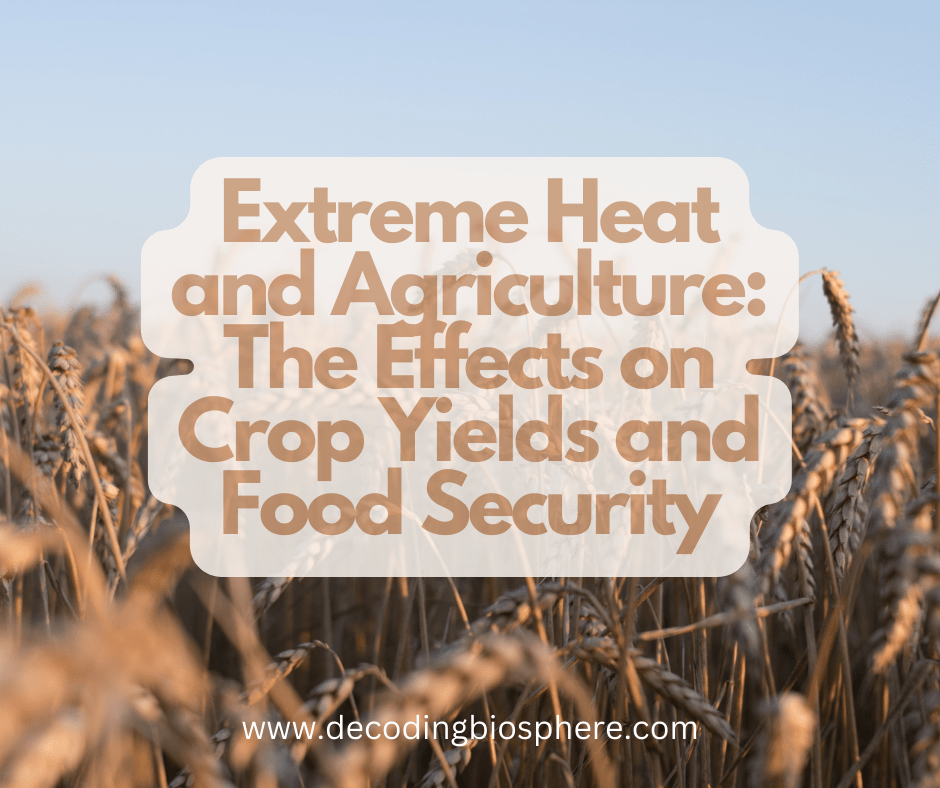In the world of farming, extreme heat is like a fierce dragon breathing fire on the crops. When the sun scorches the earth with intense heat, it can have devastating effects on crop yields and threaten our food security. In this article, we’ll explore the ways extreme heat affects crops, the consequences for food production and availability, and what we can do to protect our food supply in a warming world.
Understanding Extreme Heat
First, let’s get to know our fiery foe: extreme heat. When temperatures soar far beyond what’s considered normal for a region, we’re talking about extreme heat. It’s like turning up the heat in an oven and leaving the crops to bake under the blazing sun.
The Impact on Crop Yields
When extreme heat strikes, crops feel the burn. Here’s how:
- Stunted Growth: Just like people wilt in the heat, so do plants. Extreme temperatures can slow down or even stop a plant’s growth altogether. It’s like pressing pause on the plant’s life cycle.
- Reduced Photosynthesis: Plants need sunlight to make their food through a process called photosynthesis. But when it’s too hot, they struggle to photosynthesize effectively. It’s like trying to cook a meal without enough ingredients.
- Water Stress: Imagine you’re thirsty on a scorching day with no water in sight. That’s how plants feel during a heatwave. Extreme heat causes water to evaporate from the soil faster than the plants can drink it up, leading to drought stress.
Facts: Did you know?
- Extreme heat can reduce crop yields by up to 25% for every 1°C increase in temperature.
- Maize, wheat, and rice – three of the world’s most important crops – are particularly sensitive to extreme heat.
Consequences for Food Security
Now, let’s talk about the ripple effects of extreme heat on food security:
- Shortages and Price Spikes: When crops fail due to extreme heat, there’s less food to go around. This can lead to shortages in the grocery stores and higher prices for the food that is available. For some people, it means struggling to afford enough to eat.
- Nutritional Deficiencies: When staple crops like rice and wheat are affected by extreme heat, it can disrupt the balance of nutrients in people’s diets. This can lead to malnutrition and health problems, especially for children and vulnerable populations.
- Rural Livelihoods at Risk: Many farmers rely on their crops to make a living. When extreme heat damages their harvests, it can push them further into poverty. It’s like taking away their livelihoods and leaving them with nothing to fall back on.
Facts: Did you know?
- Small-scale farmers, who often lack access to resources like irrigation and climate-smart technologies, are particularly vulnerable to the impacts of extreme heat.
- In some regions, extreme heat events have led to mass migrations as people search for food and water.
Protecting Our Food Supply
So, what can we do to shield our crops and safeguard our food supply from the scorching effects of extreme heat?
- Adaptation Strategies: Farmers can adopt practices that make their crops more resilient to extreme heat, such as planting heat-tolerant varieties, improving soil health, and implementing water-saving techniques like drip irrigation.
- Investment in Research: Scientists are working hard to develop new crop varieties that can withstand higher temperatures. By investing in agricultural research and innovation, we can equip farmers with the tools they need to thrive in a changing climate.
- Climate Action: Ultimately, the best way to protect our food supply from extreme heat is to address the root cause: climate change. By reducing greenhouse gas emissions and transitioning to renewable energy sources, we can mitigate the impacts of extreme heat on agriculture and build a more resilient food system for the future.
Facts: Did you know?
- According to the Intergovernmental Panel on Climate Change (IPCC), global temperatures are expected to continue rising, leading to more frequent and severe heatwaves in many regions.
- The Paris Agreement, an international treaty aimed at combating climate change, calls for global efforts to limit global warming to well below 2°C above pre-industrial levels.
Conclusion
Extreme heat poses a formidable threat to crop yields and food security around the world. From stunted growth to shortages in the grocery stores, the impacts of extreme heat on agriculture are far-reaching and profound. It’s time to extinguish the dragon of extreme heat and cultivate a more resilient and secure food system for all.

